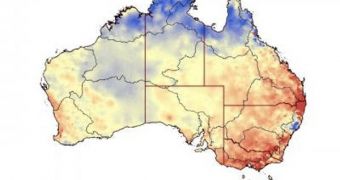According to investigators at the Commonwealth Scientific and Industrial Research Organization (CSIRO), the water scarcity currently being experienced in southeastern Australia has been steadily developing for the past 15 years. While many have believed this to be the case, expert Dr. Albert van Dijk's study is the first to bring forth conclusive scientific evidence of this. The expert presented his finds on Wednesday, August 26th, at the Sixth International Scientific Conference on the Global Energy and Water Cycle, held in Melbourne.
The new paper, other experts agree, offers a fresh and deep insight into the country's water balance and reserves, and, as such, may be used in the future for other scientific assessments. “The data shows the first signs of diminishing water availability in Australia appeared somewhere between 1993 and 1996 when the rate of water resource capture and use started to exceed the rate of streamflow supply,” van Dijk said at the scientific conference.
CSIRO's Water for a Healthy Country Flagship, and the Bureau of Meteorology supported the scientist's work, in hopes of being able to create the most advanced and up-to-date observation and modeling system of water estimates across the country. More than 30 years' worth of satellite observations were needed for the new model, alongside decades of on-the-ground studies, at key locations throughout the nation. “If this technology had been available to us in the mid-1990s, the onset of dry conditions could have been detected earlier. The results of the study underscore the importance of good water information for water resource planning,” Dr. van Dijk added at the meeting.
He also revealed that the model data supported historical trends, as well as predictions made by climate scientists in relation to the effects of global warming and climate change. “Parts of Australia have had record low rainfall the last several years, but our records aren't very long and the drought may still be within natural limits. What makes the situation appear so much worse is that the sixties and seventies were quite wet. That's also when we started capturing river flows in large reservoirs for our growing cities and irrigated agriculture. In retrospect it appears we have become over-reliant on what is now looking like 'bonus' rainfall during that time,” the expert concluded.

 14 DAY TRIAL //
14 DAY TRIAL //